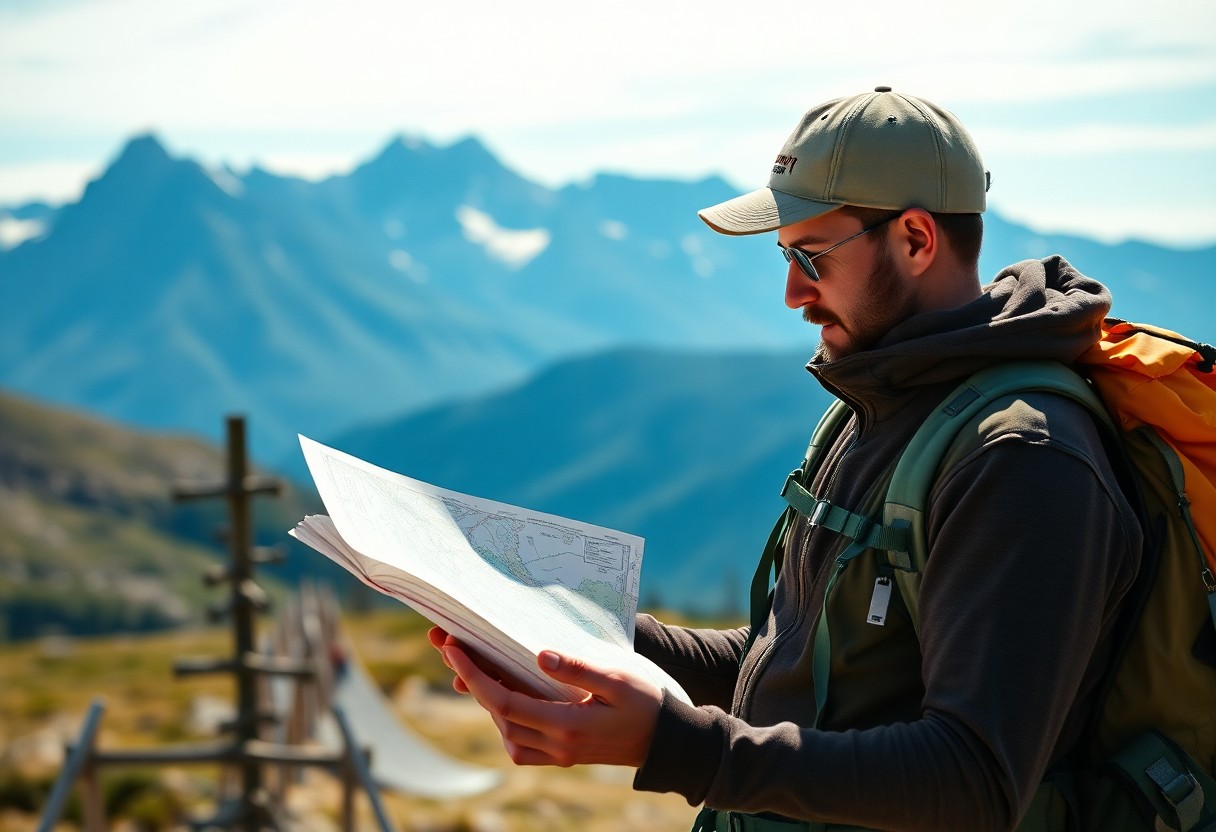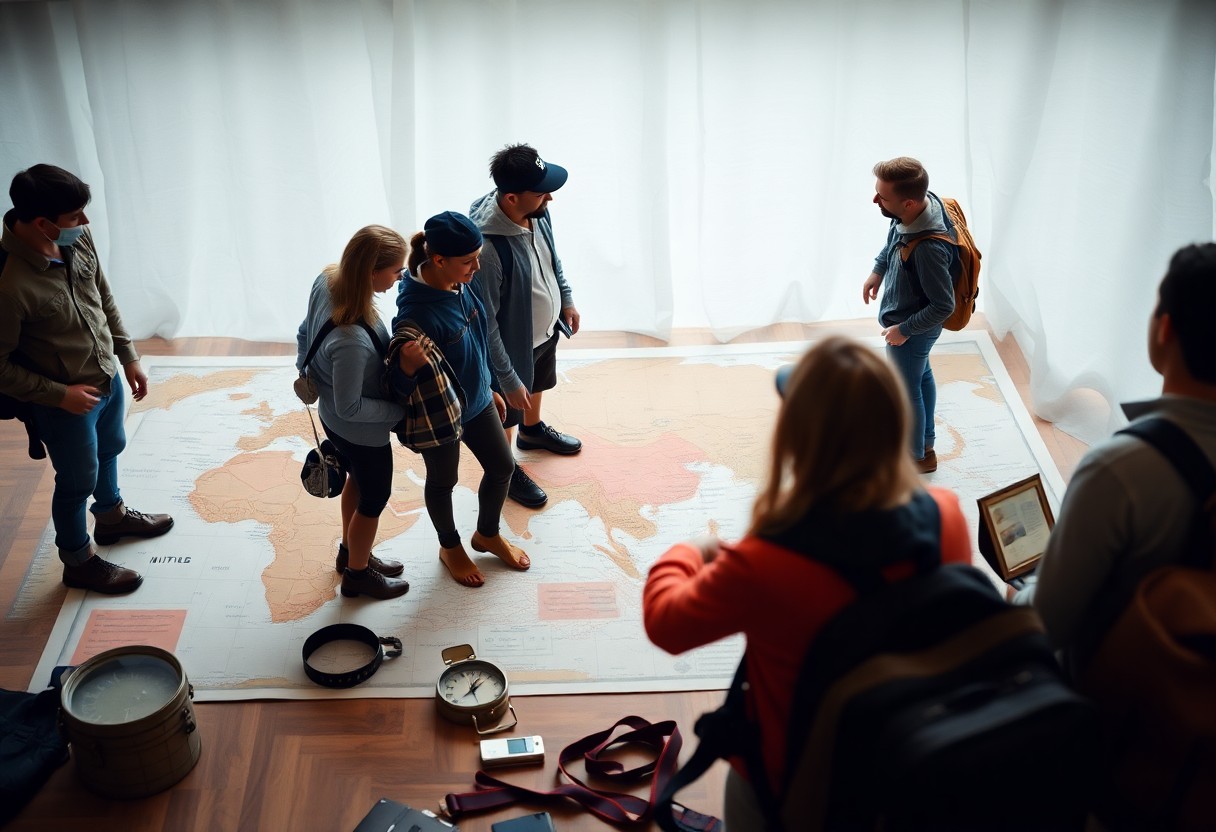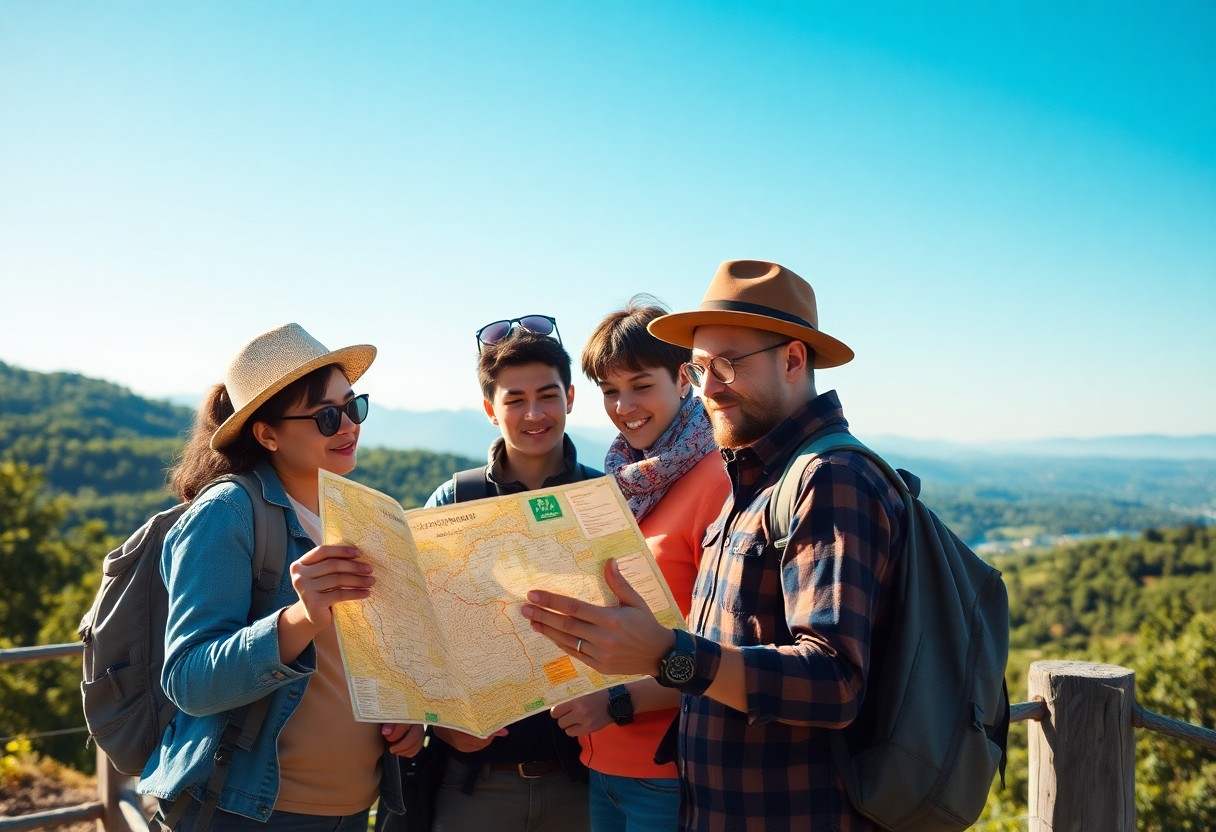
There’s a lot to consider when choosing your next travel destination, especially when prioritizing your safety. You want a place that offers excitement without unnecessary risks, so learning how to assess general safety is crucial. By examining factors like local crime rates, political stability, and healthcare quality, you can narrow down regions that provide peace of mind. This approach ensures you focus on adventures that are both enjoyable and secure, allowing you to make informed decisions as you plan your journey.
Key Takeaways:
- Focus on regions with low crime rates and stable political environments for safer travel experiences.
- Research local health and emergency services availability to ensure adequate support if needed.
- Look for areas with well-established tourist infrastructure to make navigation and accommodations easier.
- Consider destinations recommended by official travel advisories and experienced travelers.
- Prepare by learning basic local customs and language phrases to enhance safety and cultural respect.
Decoding the Numbers: Navigating Safety Indexes
Safety indexes condense complex data into accessible scores, helping you compare regions quickly. These indexes factor in crime rates, political stability, health infrastructure, and more, offering a snapshot of overall safety. Interpreting these numbers alongside qualitative reports can guide your choices, allowing you to prioritize destinations that align with your comfort level and risk tolerance. Keep an eye on year-over-year trends within these scores to spot improving or deteriorating conditions that raw numbers alone might not reveal.
Understanding Global Peace Index and Travel Advisories
The Global Peace Index ranks countries by levels of violence, conflict, and military expenditure, revealing where peace prevails. Travel advisories from governments further refine this by highlighting immediate risks such as civil unrest, terrorism, or health outbreaks. Using both, you gain a layered perspective—peace scores offer long-term stability data, while advisories provide real-time alerts tailored to travelers. For instance, although Iceland scores highly on peace indexes, specific regional advisories may suggest caution during certain events or seasons.
Reliable Resources for Safety Metrics
Accessing trustworthy sources like the Institute for Economics and Peace, the U.S. State Department’s travel advisories, and the World Health Organization will give you a comprehensive safety profile. These organizations utilize verified data, often supplemented by expert analysis, enhancing the reliability of their insights. Combining their reports gives you a broader sense of political, social, and health-related conditions affecting your destinations.
Beyond the headline safety scores, you should investigate databases such as the Overseas Security Advisory Council (OSAC) for country-specific crime trends, and Numbeo for real-time user-submitted data on urban safety. These platforms gather diverse inputs—from official statistics to traveler experiences—offering a textured understanding that numbers alone might miss. Including multiple trusted sources in your research equips you to discern subtle nuances, like whether low crime statistics co-exist with risks of natural disasters or infrastructure challenges.
Infrastructure as a Safety Net: Why It Matters
Reliable infrastructure forms the backbone of safe travel, directly impacting your experience in emergencies, access to healthcare, and overall security. Well-maintained roads, efficient public transport, and robust communication networks ensure that help is available when needed, reducing risks associated with remote or underdeveloped areas. For detailed guidance on managing activity-related risks, consider reviewing the Activity Safety Risk Management framework, which emphasizes the importance of infrastructure in safe adventure planning.
The Role of Development in Travel Safety
Development level strongly influences travel safety by providing consistent access to emergency services, clean water, and secure lodging. Urban centers with solid electrical grids and healthcare facilities reduce hazards from natural disasters or disease outbreaks, making your stay less vulnerable to unexpected complications. You’ll find that areas with higher development standards also tend to have better law enforcement presence, contributing to a more secure environment during your exploration.
Examples of Safe Destinations with Strong Infrastructure
Countries like Switzerland, Canada, and Japan consistently rank high in safety due to their comprehensive infrastructure—advanced healthcare systems, extensive public transportation, and efficient emergency response services. Their investment in infrastructure ensures tourists can navigate easily and confidently, with rapid access to assistance if needed.
Switzerland’s integrated transport networks connect even mountainous regions with reliable emergency services, while Canada’s widespread healthcare facilities make rural areas accessible without compromising safety. Japan’s meticulous disaster management systems and well-maintained urban infrastructure also provide a secure environment for travelers. Choosing destinations with such developed infrastructure means you benefit from a safety net that supports your adventure at every step.
Safety First, Adventure Next: Quick Tips on Identifying Generally Safe Regions for Initial Consideration
| Tip | Description | Example Regions |
|---|---|---|
| Research Crime Rates | Check official crime statistics and travel advisories for low crime areas. | Canada, Japan, New Zealand |
| Consider Political Stability | Avoid regions with ongoing conflicts or political unrest. | Switzerland, Norway, Singapore |
| Assess Healthcare Quality | Prioritize regions with accessible and reliable healthcare facilities. | Germany, Australia, South Korea |
| Evaluate Infrastructure | Look for regions with good transportation, communication, and emergency services. | Netherlands, Sweden, United Arab Emirates |
| Review Local Laws and Customs | Understand legal norms and cultural practices to avoid misunderstandings. | Iceland, Finland, Portugal |
| Check Natural Disaster Risks | Identify areas with low risk of earthquakes, hurricanes, or floods. | Malta, Denmark, Uruguay |
| Use Trusted Travel Resources | Utilize government travel sites, reputable travel guides, and forums. | U.S. State Department, Lonely Planet |
Answer from Perplexity: pplx.ai/share
Stability and Safety: Evaluating Political and Natural Risks
Assess the political stability of your destination by monitoring recent election results, civil unrest reports, and the government’s track record on law enforcement. Additionally, natural hazards such as earthquakes, hurricanes, and flooding can dramatically alter travel conditions. Combining political analysis with natural risk assessment sharpens your ability to choose areas where your adventure can proceed with minimal disruption and maximum peace of mind.
Tools for Assessing Political Climate
You can leverage resources like the Global Peace Index and the U.S. Department of State travel advisories to evaluate current political risks. These tools provide real-time updates on protest activity, government stability, and crime trends. Local news outlets and social media channels also offer ground-level perspectives, helping you gauge sentiment and spot emerging tensions before they escalate.
The Impact of Natural Disasters on Travel
Frequent natural disasters such as typhoons in Southeast Asia or wildfires in California can disrupt transportation and endanger safety. Knowing the seasonal patterns and historical occurrence of these events enables you to avoid peak risk periods and prepare contingency plans for your itinerary.
For instance, Japan’s typhoon season peaks from August to October, often triggering travel delays and evacuation orders that could derail your plans. Conversely, Central America’s rainy season brings flooding and landslides, affecting road access and accommodations. Investigate local meteorological services and global disaster tracking platforms like the International Disaster Database (EM-DAT) to get detailed forecasts and historical impact data. This insight empowers you to reschedule or reroute your journey before natural disturbances strike.
Crime Rates and Tourist Safety: A Deep Dive
Analyzing crime rates in prospective travel destinations reveals patterns that influence your safety significantly. Areas with consistently low violent and property crime rates generally offer a safer environment, but tourist hotspots sometimes experience higher petty crime like pickpocketing. Data indicates travel-friendly cities often invest in heightened police presence around key sites, reducing risk. You should look beyond overall crime levels and focus on specific risks affecting tourists to make well-informed decisions.
Differentiating Crime Types Relevant to Travelers
Not all crime statistics impact you equally—recognizing which crimes affect travelers most sharpens your vigilance. Violent crimes, while alarming, are less common in tourist areas compared to theft, scams, and petty crime. Common issues include pickpocketing, bag snatching, and credit card fraud, often targeting inattentive visitors. Assume that understanding these distinctions helps tailor your precautions effectively.
| Crime Type | Implication for Travelers |
|---|---|
| Violent Crime | Low frequency in tourist zones but severe impact if encountered. |
| Petty Theft | Most prevalent; includes pickpocketing and bag snatching. |
| Scams | Common in crowded areas; often involves overcharging or distraction tactics. |
| Credit Card Fraud | Increasingly common, especially in popular restaurants and vendors. |
| Vandalism | Less directly threatening but may indicate degraded safety. |
Utilizing Technology for Real-Time Safety Assessments
Mobile apps and online platforms enable you to track safety updates and emergency alerts in real-time. Tools like Citizen, Google Maps crime layers, and local police social media feeds offer immediate insights into incidents around you. Assume that leveraging such resources enhances your situational awareness and responsiveness during your travels.
Diving deeper, technology allows customization of alerts based on your location and risk tolerance. For example, you might receive notifications about recent muggings near your hotel or road closures due to protests, helping you alter plans proactively. Additionally, traveler forums and crowdsourced data provide firsthand reports that supplement official sources. Integrating these apps into your travel routine transforms raw data into actionable intelligence, keeping your adventure both thrilling and secure.
Tapping into Collective Wisdom: The Power of Community
Relying on firsthand experiences from fellow travelers provides invaluable insight into safety that statistics alone can’t offer. Communities formed around travel frequently share honest reports about neighborhoods to avoid, reliable local contacts, and timely updates on any sudden changes in safety conditions. Engaging with these communities allows you to gauge real-time risks and benefits, adding a layer of practical understanding that formal advisories may miss. This crowd-sourced intelligence becomes especially helpful in assessing regions undergoing political shifts or natural events, helping you fine-tune your destination choices based on the lived experiences of others.
Online Resources for Crowdsourced Safety Information
Platforms like TripAdvisor, Reddit’s r/travel, and specialized forums such as Lonely Planet’s Thorn Tree provide user-generated updates on safety concerns, scam alerts, and local customs. You can filter feedback by date, region, and traveler profile, ensuring relevance to your plans. Apps like Safeture also aggregate global risk data while integrating input from user reports, offering you a dynamic snapshot of safety conditions that evolve with ongoing traveler contributions.
Building Connections with Other Travelers
Networking with other solo travelers or groups through social media travel groups, Meetup events, or at hostels offers firsthand safety tips and encouragement. These interactions often lead to shared itineraries or buddy systems that enhance your situational awareness and provide support in new environments. More than just information, these connections build trust circles you can rely on should unexpected challenges arise during your journey.
Delving deeper into connections with other travelers, actively participating in community gatherings or visit-specific online groups equips you with nuanced insights into local safety nuances—like which districts have watchful locals or where authorities are particularly responsive. This network can alert you swiftly about emerging issues such as protests or natural hazards, helping you adjust plans without losing sight of your adventure goals. These trusted relationships often evolve into ongoing travel partnerships, multiplying your safety net well beyond a single trip.
Cultivating Cultural Awareness: Laws and Customs
Before setting foot in a new destination, you should familiarize yourself with local laws and customs to avoid unintended offenses. In many regions, seemingly minor gestures or dress codes can carry significant legal weight. For instance, in some Middle Eastern countries, public displays of affection are prohibited, while in Japan, tipping is considered rude. By recognizing these nuances, you reduce risks and enhance your cultural experience, making interactions smoother and more respectful.
The Importance of Understanding Local Norms
Local norms shape everyday behavior and social expectations, reflecting deeply ingrained cultural values. Understanding them allows you to interpret gestures, dining etiquette, and communication styles correctly. For example, avoiding direct eye contact might signal respect in certain Asian cultures, while it can be perceived as evasiveness elsewhere. Grasping these subtleties helps you build genuine connections and prevents misunderstandings that could impact your safety or your travel enjoyment.
Research Strategies for Cultural Preparation
You can gain valuable cultural insights through diverse research methods tailored to your destination. Start with official government travel sites for legal guidelines, then explore travel forums for firsthand traveler experiences. Language apps often include cultural tips, and watching travel documentaries or interviews provides context on social dynamics. Combining these resources equips you with a comprehensive understanding, helping you adapt quickly and respectfully upon arrival.
Diving deeper into research strategies, tapping into local news outlets can reveal ongoing social issues, seasonal traditions, or changes in regulations that might not be captured in broader travel guides. Engaging with expatriate communities online exposes you to nuanced advice on navigating daily life, from appropriate greetings to public behavior. Additionally, connecting with locals through language exchange platforms or cultural meetup groups before departure can afford you practical knowledge and foster early relationships, making the transition smoother and enriching your overall experience.
To quickly assess the safety level of a new destination, follow these key steps:
Quick Steps to Assess Destination Safety
-
Check Official Travel Advisories:
Consult government travel advisory websites (e.g., U.S. State Department) which rate destinations from Level 1 (lowest risk) to Level 4 (do not travel). These advisories consider crime, terrorism, civil unrest, and other risks1. -
Research Local Crime and Security Risks:
Look for information on violent or organized crime, terrorism threats, and the reliability of local law enforcement. Pay attention to specific neighborhood safety and avoid areas flagged for high crime12. -
Evaluate Political Stability and Civil Unrest:
Avoid destinations with ongoing conflicts, protests, or heightened security threats that could escalate quickly12. -
Review Healthcare and Emergency Services:
Check the quality and accessibility of healthcare facilities, emergency response times, and whether your insurance covers medical emergencies there24. -
Assess Infrastructure and Transportation Safety:
Consider road safety records and transportation reliability, as dangerous roads or poor infrastructure increase risk24. -
Read Recent Traveler Reviews and Reports:
Use travel forums, review sites, and social media to gauge current conditions, including safety tips and areas to avoid2. -
Prepare Personal Safety Measures:
Pack a first aid kit, carry emergency contacts (local police, embassy, insurer), keep copies of important documents, and maintain regular contact with family or friends2. -
Use Travel Safety Maps and Tools:
Use static or integrated travel safety maps that show medical, security, and road safety risks visually. Integrated maps provide real-time alerts based on your location5. -
Hotel Safety Checks:
Choose reputable hotels in safe neighborhoods, check locks and security features on arrival, and be alert for hidden cameras or suspicious activity3.
By combining official advisories, local research, traveler feedback, and personal preparedness, you can quickly form a reliable picture of a destination’s safety before travel12345.
Summing up
To wrap up, when begining on new travels, prioritizing your safety helps ensure a smooth and enjoyable experience. You should focus on regions with stable political climates, low crime rates, and accessible healthcare. By researching local customs and staying aware of current travel advisories, you can confidently identify safe areas for your initial adventures. Taking these precautions allows you to explore with peace of mind, making your journey both exciting and secure.
Q: What are some initial signs that a region is generally safe for travel?
A: Look for low crime rates reported by local authorities or international travel advisories, a visible and effective police presence, and positive feedback from recent travelers. Stable political environments and well-maintained infrastructure also indicate safer regions.
Q: How can understanding local customs help in ensuring safety while traveling?
A: Being aware of and respecting local customs helps avoid misunderstandings that could lead to conflict. It fosters goodwill among locals and helps travelers blend in, reducing the likelihood of becoming a target for crime or unwanted attention.
Q: What role do health considerations play in determining if a region is safe to visit?
A: Assessing health risks, such as prevalent diseases, sanitation levels, and access to medical facilities, is important. Ensuring vaccinations are up to date and knowing the location of reliable healthcare centers enhances personal safety during travel.
Q: How can utilizing technology assist in identifying safe regions for travel?
A: Using apps and websites that provide real-time updates on safety, crime reports, and traveler reviews can help in selecting safer destinations. Mapping tools also assist in avoiding areas with frequent incidents and identifying safe routes.
Q: Why is it beneficial to consult multiple sources before deciding on a travel region?
A: Relying on various sources such as government advisories, travel forums, local news, and guidebooks provides a well-rounded perspective on safety. Cross-referencing information decreases the chances of overlooking risks and helps in making informed decisions.
Citations:
- https://travel.state.gov/content/travel/en/traveladvisories/traveladvisories.html/
- https://fastcover.com.au/blog/choosing-a-safe-travel-destination
- https://www.ndtv.com/travel/8-hotel-safety-tips-that-every-smart-traveller-should-know-before-unpacking-8536664
- https://worldtravelprotection.com/travel-risk-assessment/
- https://www.alertmedia.com/blog/travel-safety-map/
- https://www.zoomlite.com.au/blogs/news/50-travel-safety-tips
- https://www.globalguardian.com/global-digest/travel-risk-assessments
- https://www.smartraveller.gov.au/consular-services/travel-advice-explained
- https://www.safetravel.govt.nz/destinations/about-our-travel-advice
- https://www.fcmtravel.com/en-nz/resources/insights/corporate-travel-risk-assessment
Answer from Perplexity: pplx.ai/share





